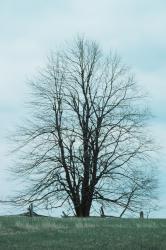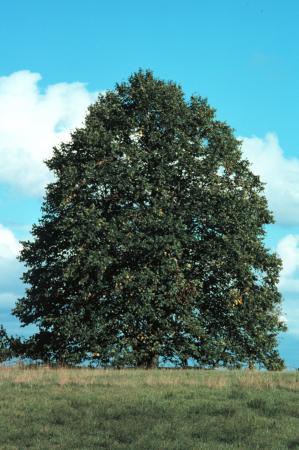June 11, 2013
| Tilia americana Basswood
|
| Description | Basswood is an adaptable native tree with few pests, aromatic flowers and pleasant foliage. |
| Usage | Shade tree, street tree for some cultivars, wide boulevard. |
| Origin | Southern Manitoba to New Brunswick, south into USA |
| Hardiness zone | 3 |
| Size | 35m high, 100cm diameter in wild, smaller in cultivation. |
| Form/texture | Symmetrical, pyramidal in youth, rounded with age. |
| Growth rate | Medium. |
| Leaf | Simple, alternate, broad heart shaped up to 15 cm long. No distinctive fall colour. |
| Flower | Mid-June-mid July creamy yellow, fragrant. |
| Fruit | Plentiful, food for wildlife. |
| Exposure/culture | Shade tolerant, grows well in full sun. Grows well in all soils, wide range of pH. Tolerates occasionally wet to occasional dry soil. Moderately sensitive to deicing salt (Beckerman). Easy to transplant. Few pests. |
| Comments | "Basswood is one of our most widely adapted, common and widespread trees, equally at home as a multi-stemmed runt on the Escarpment face and Pelee Island alvars or a stately, long-trunked patrician in our richest woodlands" (Waldron). Supports many species as home or food, without being pests. "In mixed stands with other broadleaf trees — usually outgrowing them" (Farrar). Flowers and fruit have a uniquely Tilia look; a small long-stalked cluster joined to a distinctive, long, narrow, leaf-like bract. Flowers attract a large number of insect pollinators. Basswood honey is delicous. Though a strong tree, the basswood adult size limits its application in smaller urban settings.
|



Reference:
Beckerman, J. and B.R. Lerner. 2009. Salt Damage in Landscape Plants. Purdue Extension Publication ID-412-W. Purdue University.
Farrar, J.L. 1995. Trees in Canada. Fitzhenry and Whiteside Limited, Markham, Ontario and Canadian Forest Service, Natural Resources Canada, Ottawa.
Waldron, G. 2003. Trees of the Carolinian Forest. The Boston Mills Press. Erin, Ontario.
